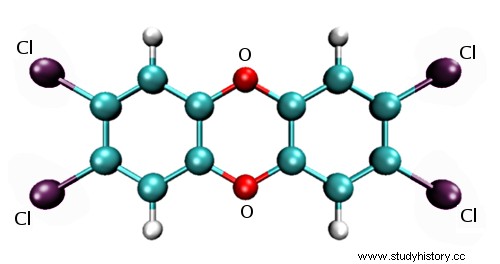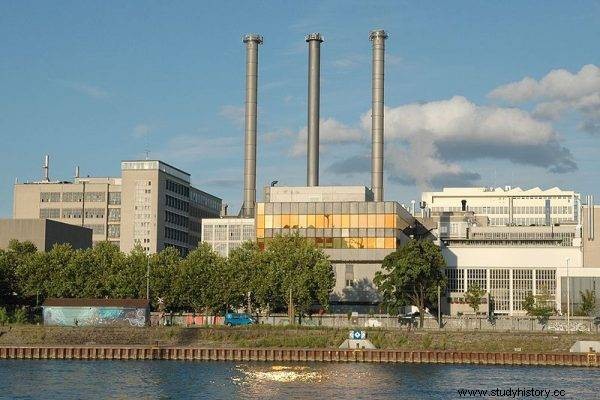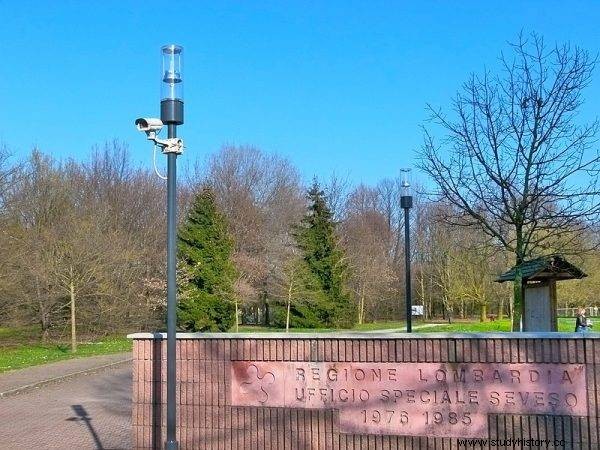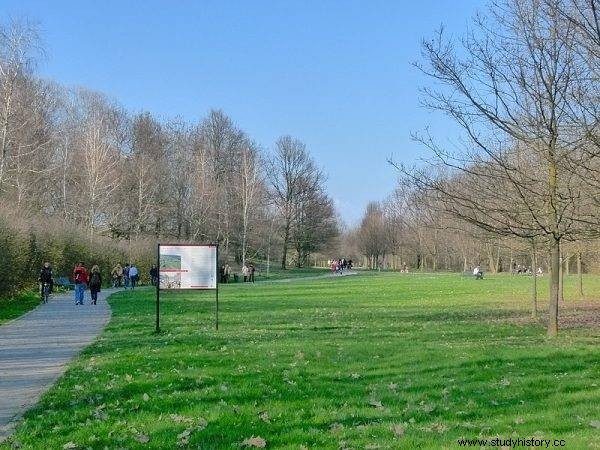A seemingly harmless accident at a chemical plant turned out to be tragic. This is the story of the Italian city of Seveso covered in a poison cloud.
In 1976, the Seveso population was approximately 17,000. The town did not stand out with anything special - there was an agricultural economy, several dozen local businesses and a few large industrial enterprises. Nobody expected a cloud of red smoke coming from the chimney of a nearby factory to cause a gruesome catastrophe ...
Explosive mixture
The Industrie Chimiche Meda Societa Azionaria factory - ICMESA for short - was located in the town of Meda, adjacent to Seveso. Since 1971, it has been producing the fungicide and the herbicide 2,4,5-trichlorophenol, from which other compounds were later produced, including the deadly hexachlorophen, used, inter alia, as an ingredient of baby powders, which was withdrawn from use after a series of tragic accidents .
The production of 2,4,5-trichlorophenol took place in reactors made of a chromium-nickel-molybdenum alloy with a capacity of 10,000 liters. The chemicals were mixed by means of an impeller to keep the temperature of the whole mixture constant, and heating was done by steam supplied to the plant's power plant. The protective system was a cooler with a reservoir of 3000 liters of water, which, if necessary, could flood the system and quickly reduce the temperature. Additionally, the reactor chimney had an emergency valve that burst at a pressure greater than 3.8 bar to prevent the ladle from breaking. It all seemed very safe for its time although there was no factory readable thermometer installed and the cooler could only be started manually.

Seveso - dioxin
1,2,4,5-tetrachlorobenzene was mixed with sodium hydroxide inside the tank. The last step in the production cycle was the removal of distilled ethylene glycol from the vat. As assumed, the reaction took place at a temperature of 158 ° C, and the supplied water vapor was about 190 ° C. Earlier studies have shown that the exothermic reaction takes place only at 230 ° C. Unfortunately, which was not known at that time, already at 180 ° C the mixture was already producing a dangerous by-product:dioxin (more precisely 2,3,7,8-tetrachlorodibenzodioxin, TCDD for short). It was probably the same chemical that was attempted in 2004 to poison Viktor Yushchenko. It is not hard to guess that a series of unforeseen events was enough to cause a catastrophe.
We shut down, go home
Under Italian law in 1976, factories had to close before the weekend so that workers could spend time in peace with their families. Therefore, on July 9, the power plant supplying heat to the reactors was shut down before the production cycle was completed. The load on the steam-pushing turbine was reduced and the temperature increased dramatically, reaching 300 ° C!
The workers in building B, where the reactor was located, were also finishing their shift. They didn't remove the ethylene glycol, instead they turned off the impeller and shut off the steam. Then they went home, unaware of the increased temperature of the heating medium.

Basel incinerator that burned toxic waste left over from the Seveso disaster in 1985
Unfortunately, the gas supplied from the power plant turned out to be so hot that it still heated the upper part of the reactor locally. The rotor was not running, so the heat was not distributed in any way. Eventually, the temperature on the surface of the mixture rose to 180 ° C (or, as some sources say, 190 ° C), which under these conditions turned out to be sufficient to start dangerous exothermic reactions. So the tank warmed more and more, and finally, seven hours later, the safety valve burst and the contents of the vat in the form of a rusty cloud came out through the chimney. It is estimated that about 6 tons of chemicals, including 1 kilogram of TCDD, flew "into the air".
Red cloud
One of the factory workers happened to be nearby and immediately ran to close the chimney. This, however, did not prevent the catastrophe. The wind moved the cloud southwest, and the first effects of TCDD were noticed soon. A day later, the first victims were children playing outside in Seveso and animals. Moreover, farmers noticed disturbing pitting or burn marks on the plants. The symptoms - initially intestinal problems and a high fever - were apparently not related to the factory accident, and ICMESA management did not inform local authorities of the "herbicide leak" until the day after the incident. At that time, only herbicides were said that "could damage agricultural crops."
After another day, the local authorities introduced a ban on the consumption of vegetables and cereals. Four days after the chemicals were released, the children developed skin burns, and domestic animals and cattle began to die. In total, approximately 3,300 animals died in the first few days. The doctors who dealt with suffering children had no idea what caused these severe symptoms. It wasn't until ten days later that the ICMESA board finally admitted there was TCDD in the cloud. Two weeks after the incident, the areas immediately affected were ordered to be evacuated.
Tragic results
In total, 11 cities were under the influence, and the risk area was divided into three zones. Zone A of 110 hectares with soil TCDD concentrations above 50 micrograms per square meter included part of Seveso and Meda. 736 people were evacuated and the whole area was fenced. In Zone B, 270 hectares, pregnant women and children had to leave the site to reduce exposure to toxins, and all farming activities were prohibited. Area R, with an area of 1,400 hectares, was labeled as "high risk"; TCDD was detected in trace amounts there. It was forbidden to breed animals here

Nature park in zone A. There are 2 reservoirs with contaminated material underground.
In total, the restrictions affected more than 36,000 residents. The government initially allocated the equivalent of $ 47.8 million to the decontamination plan, but that figure tripled two years after the incident. Hervig von Zwehl, ICMESA's Technical Director, and Paolo Paoletti, Production Director, were arrested.
In an effort to limit the entry of TCDD into the food chain, a crisis culling action was carried out in which 80,000 animals were killed by 1978. The bodies and remains of the ICMESA factory demolished in 1982 - a total of 200,000 cubic meters of material - were buried in zone A. The chemicals remaining on the factory premises were placed in special tanks intended for the storage of radioactive materials, then transported to Switzerland and incinerated.
Post-apocalypse landscape
Medical examinations of the victims not only revealed the terrible size of the disaster, but also provided a lot of information about the effects of TCDD on the human body. The immediate effects were mainly chlorine acne - a skin that is unpleasant and in some cases lasts for life. Burns, peripheral neuropathies and liver dysfunction have also been diagnosed. Later, the victims of the crash were found to be more likely to develop cancer. Pregnant mothers had to advise abortion immediately after exposure to TCDD. Out of nearly 500 women, only 26 decided to do so, while the rest gave birth to healthy children. Only later studies showed that boys have decreased sperm counts, and newborns are more likely to suffer from thyroid disorders.

A park (Bosco delle Querce) has been established in the area most affected by the spill.
The local population suffered not only physically. The moral losses after the collapse of two industrial enterprises, 37 local companies and 61 farms, not to mention about 4,000 vegetable gardens, were incalculable.
In 1984, it was announced that zones A and B were cleared and construction permits were issued. A sports center was built on the site of the ICMESA factory.
